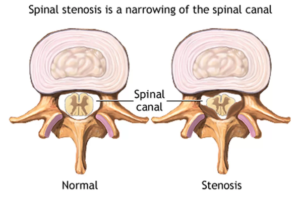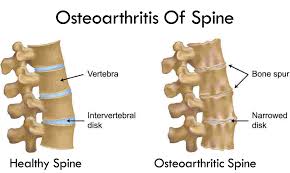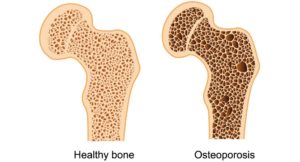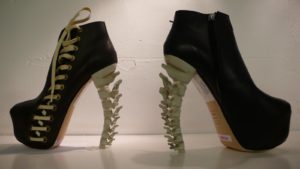Your spine is the part of the body that holds you straight throughout your lives. However, the spine begins to deteriorate as early as your 20s and 30s and continues to do so with age. A little discomfort, soreness, and pain in the back are expected with the gradual aging, but some steps can be taken to maintain your spine health and flexibility well into old age. Here we tell you how to keep your back healthy by watching your level of activity, diet, general health and attitude.
What happens to the spine with age?
With age, our bodies, especially our spine, becomes less equipped to handle the load which it bears day in and day out. These changes manifest itself through the degeneration of the spine.
Disc degeneration
The spine is made up of individual bones called vertebrae, stacked one on top of the other. The vertebra is linked with joints that allow the spine to move. It also consists of discs with jelly-like centers. These discs provide the back its ability to absorb weight and shock during motion, preventing the bones from rubbing against each other. When young, our discs are soft and act as a cushion for the vertebrae. With age, these discs increasingly become less supple as they begin losing their water content. They start wearing out and the gap between them gradually decreases, causing the individual vertebra to rub against each other. This can lead to stiffness and intermittent back pain.
Common spine conditions which manifest because of disc degeneration:
Spinal stenosis
Since your spinal discs are responsible for keeping your vertebrae in the proper position, disc erosion can cause vertebrae to move too close together and the nerves in our spine to become compressed and pinched. This spinal nerve compression, called spinal stenosis, may result in lower back pain, numbness, or the feeling of weakness in the legs. These symptoms characteristically occur while standing or walking more than a short distance but dissipates once you sit down or lean forward.
Facet Joint Osteoarthritis
As the cartilages cushioning the facet joints deteriorate with age, they are left without any padding, resulting in a condition called osteoarthritis. Osteoarthritis affects the parallel column of joints that connect the individual vertebra of the spine behind the spinal canal. Symptoms of this condition include pain and stiffness in the back. Osteoarthritis may also cause radiating leg pain and weakness known as sciatica.
Degenerative Spondylolisthesis
This is the misalignment of one vertebra over another due to weakened facet joints, ligaments, and bones. This condition is primarily seen in adults above the age of 65. Typical symptoms of this condition consist of lessening of the lower back and/or leg while sitting and worsening of pain while standing straight. In addition, there is acute stiffness in the lower back and considerable pain while bending backward.
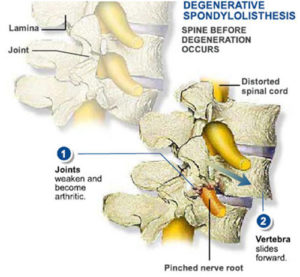
Osteoporosis
A loss in age-related bone density and strength gives rise to a condition called osteoporosis. Osteoporosis makes the bones, including the spinal vertebrae prone to fractures. With compression fractures, the vertebral bone partially collapses, losing a part of its height, resulting in acute back pain, spinal deformity, height erosion and loss of ability to do normal physical exercise.
How to keep your back healthy as you age
While there is no escaping the fact that aging will affect your bone and spine health, by taking early measures it is possible to stave off the worst of the degeneration process to maintain a healthy back.
Pay attention to your posture
Good posture is about so much more than getting a facelift or botox to look young. Paying early attention to good posture can help prevent the stoop that seems to go hand in hand with the aging process. Here’s how you can take care of your posture:
While at work:
Sedentary office positions that require you to sit slumped for long hours in front of the computer can play havoc with your spinal health with the passage of time. It causes wear and tears in the back and neck. To avoid this having an impact on your back in the long-term you need to keep in mind to:
- Sit straight on your chair while keeping your back straight
- Take frequent short walks every 30 minutes or so
- Frequently rotate your neck and shoulders
- Keep your computer monitor at an eye level
- Keep a pillow to support the small of your back when sitting
- Adjust chair height to ensure that your feet touch the ground
- Have an ergonomic work area
While sleeping
Getting proper rest and enough sleep is a big component of striving for a good spinal health. A proper mattress and a comfortable pillow ensure that you sleep well through the night and wake up fresh the next morning. Supportive mattresses and pillow are very essential to reduce the stress on neck and back while lying down in order to lessen the possibilities of degenerative effects. A mattress firm enough to support your natural curves, yet flexible at hips and shoulders, should do the trick
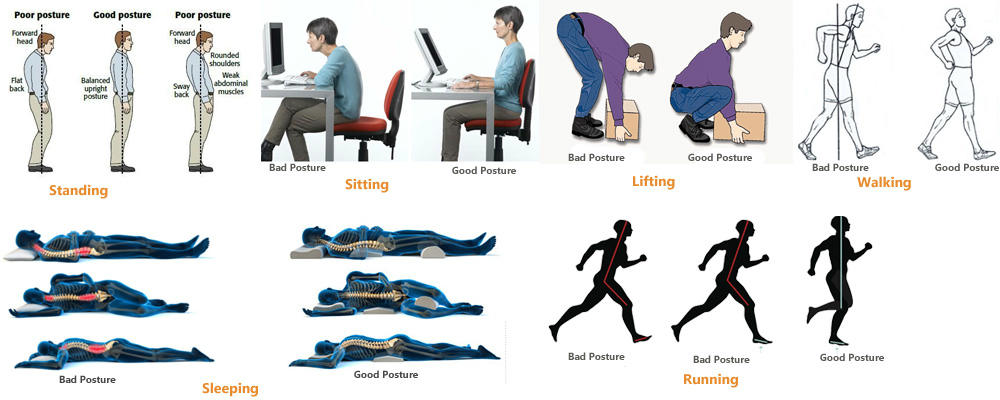
Work on your bone strength
Bone strength is about paying attention to the nutrients you consume in your diet. This includes nutrients like protein, Vitamin B12, vitamin C, vitamin, D and others. As calorie requirement goes down with age, fulfilling your nutrient requirement from other sources becomes particularly important. This is what you can do to get your essential nutrients:
Vitamin D
Keeping up with your daily requirement of Vitamin D through supplements, enough exposure to sunlight and food is key to maintaining strong bones and a strong back in turn.
Sufficient Calcium
There is a direct relationship between spinal health and calcium intake. It is recommended to have 1,000 milligrams of calcium a day for men age 51 to 70 and 1,200 milligrams for women over 50.
Proper diet
- Eating anti-inflammatory foods will also maintain your body and your spine’s fitness.
- Processed foods lack the vitamins and minerals found in natural foods
- Whole grain products are very rich in nutrients essential for bone health
- Choose from a variety of fruits and vegetables to get a proper balance of nutrients required for good bone health
Exercise reduces bone loss
A daily workout routine can strengthen your muscles and bones, slowing down the consequent spinal aging:
What to do
- Work on a strong core and abdominal muscles to diminish injuries and strain to your back muscles
- Do moderately intense aerobics at least five times a week
- Weight training and weight-bearing workouts are a critical component to combat the development of bone loss and weakening of spine
- Walking increases the blood flow to the spine
- Yoga is particularly beneficial for spine health
What not to do
- Avoid lifting objects that are heavier than 25% of your own body weight.
- Avoid overdoing it with repetitive movements that can lead to muscle strains and sprains.
Strive for an optimal body weight
Spinal health is not only about weight loss but rather maintaining an optimal body weight that does not put undue strain on your back and legs. Preventing your spine from bearing more weight than it is designed for is a great way of protecting it.
Benefits of a good massage
A good massage helps spike the levels of endorphins, which is the body’s natural painkiller. It also boosts blood flow to the affected area which in turn speeds up the healing process.
Wear shoes which adequately support your spine
To support your spine and to maintain its alignment, wear shoes that give proper support to the heel without being overly tight. Good fitting shoes prevent the foot from rolling outside or inside too much during any physical activity. Avoid high heels.
A healthy lifestyle is a key
Everything that goes on in your body and in your mind, impacts your spinal well being. Requirements of a healthy lifestyle for a healthy back even at a mature age are:
Reduce stress and combat depression
Unnecessary and excess stress literally ties you up in knots, especially the muscles in your neck and back. Find ways to relax and loosen your muscles on a daily basis for long-term back health. Depression can contribute significantly towards back pain. Seek counseling to combat it for better overall health.
Say no to smoking
In addition to being bad for the lungs, smoking speeds up osteoporosis, making the bones more fragile and brittle. It is also associated with the loss of shock-absorbing properties of the gel found in vertebrae discs, expediting the degenerative disc process.
Get a grip on diabetes
Poor control of blood sugar or glucose as a result of diabetes is associated with spondylosis and back pain. A reduced physical activity that accompanies back pain, sets in motion a vicious cycle of increased weight gain and a spike in sugar levels, exacerbating spinal degeneration.
Do not ignore back injuries
Back pain and injuries that are ignored can go on to become a cause of serious concern in the future. Injuries to the back and any sort of pain should be treated with rest, ice, elevation, and compression. Recurring and debilitating pain, even if age-related, is not normal. It should be given the medical attention it requires for mitigation.
Food for thought
Even though it is impossible to stop the effects of the natural aging process, it is possible to minimize the chances of developing severe spinal conditions by paying attention to your spinal well being. A strong back will certainly help you in looking and feeling young at an advanced age.

